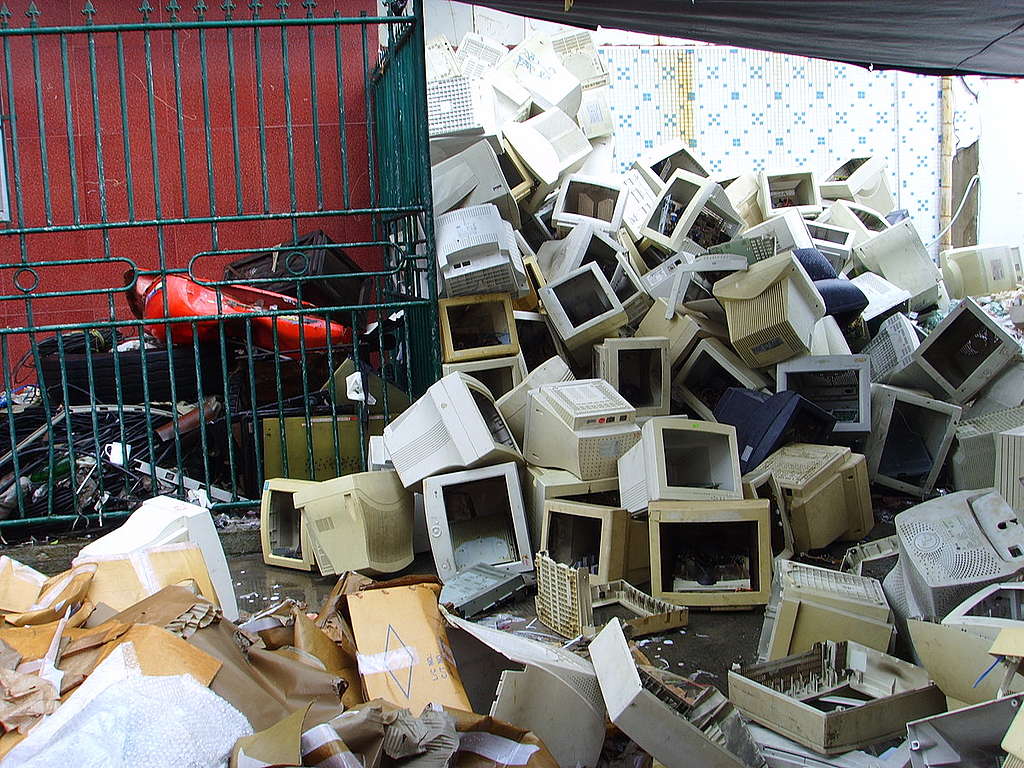This little ad is a pitch by Metro Vancouver’s transportation authority, TransLink. They want the public to choose “underwater transit technology” – it means bigger budgets for them. They dress up this choice with the hot term “technology” and invite us to “embrace” this. They don’t mention that dikes also require “technology,” and they certainly don’t mention the taboo topic of system change.
Embracing the crisis with technology feels good; it means growing our economy, advancing, having more, not giving up anything. This blind spot remains our deep, unspoken problem. We want to solve the ecological crisis and the humanitarian crisis with economic growth and “technology,” without changing anything. We want it all.
The problem is, we’re avoiding the root problem and the genuine solutions. The climate crisis, biodiversity crisis, and all other ecological challenges are symptoms of the larger, deeper problem: Ecological Overshoot. No species can grow out of overshoot. All genuine solutions to our ecological dilemma must include a contraction of human scale. We must relinquish our expectation of endless economic growth. However, this appears as the one solution ignored by most people, governments, corporations, and even many environmentalists.

Slack in the system
Finding an effective way to discuss human scale as a fundamental
problem is one of the biggest challenges I’ve faced as an ecologist.
People find the topic uncomfortable. The idea of living with less
conflicts with our notions of unlimited human ingenuity, human destiny,
human rights, and human specialness. We find it difficult to admit that
even with all our technological wonders, we are animals, subject to the
biological and physical limits of our habitat. Modern ecologists have known and described ecosystem limits for decades, highlighted in the 1972 Limits to Growth study. Capitalist economists, however, mocked the idea that there exist any limits to human economic growth. In the 1980s, U.S. President Ronald Reagan claimed, “There are no such things as limits to growth, because there are no limits to the human capacity for intelligence, imagination, and wonder.” The denial feels appealing.
This long-standing taboo against talking about the limits of human growth is beginning to crumble, however, even within mainstream media. Last month, the Financial Times, published an article by Harry Haysom, “The Myth of Green Growth,” in which he states that, “green growth probably doesn’t exist.” As we build out our renewable energy infrastructure, he suggests, we need to simultaneously contract our economies and consume less material and energy.
Newsweek recently published an essay called “This Controversial Way to Combat Climate Change Might Be the Most Effective” by Michael Shank, who teaches sustainable development at NYU. Shank encourages worldwide family planning to solve the ecological crisis.
Vaclav Smil, Professor Emeritus of Environment at the University of Manitoba, Canada, is considered among the world’s experts in energy transitions. His recent book, Growth: From Microorganisms to Megacities, describes an, “irreconcilable conflict between the quest for continuous economic growth and the biosphere’s limited capacity.”
All biological habitats are finite, all plants and animals reach individual maturity, and all natural communities reach collective maturity. Predators grow until they deplete their game, then they die back. Lake algae will grow until they deplete the available nutrients, then die back. Ecosystems reach a “climax status” and endure in “dynamic homeostasis” until some catastrophe collapses the balance.
Growth swamps efficiency
Smil considers the idea that we can “decouple” economic growth from material throughput “total nonsense.” History shows that when human enterprise becomes more efficient with a resource, we use more of that resource, not less; a phenomenon known as the “rebound effect” in economics or “Jevon’s paradox,” in mechanical engineering.

Smil emphasizes that we are now coming face-to-face with the real limits of human scale. “That’s our major problem,” he writes, “scale.” Humans and their livestock now comprise 96% of all mammal biomass on Earth. That is a problem of scale. Our climate crisis, our biodiversity crisis, our depleted soils, and humanitarian crises, are all symptoms of the unrealistic scale of human enterprise.
Smil argues that for the long-term survival of civilization, we have to accept the “end of growth.” We cannot engineer our way out of the contradiction or reconcile planetary constraints with unrestrained human aspirations. We must abandon the idea that we can take baby steps. We require a “radical … bold vision … fundamental shifts, and unprecedented adjustments.”
Smil believes we could achieve this shift because of the tremendous “slack in the system.” The rich world wastes so much energy, materials, and food, that we could vastly reduce our material and energy use simply by avoiding waste.
The industrial agriculture system, for example, dumps vast quantities of toxic pesticides into our soils, burns millions of gallons of diesel fuel, disrupts Earth’s nutrient cycles with ammonia and fertilizers, and then wastes 40% of the harvest. This is the “slack” in the system that could be used to help us reduce consumption.
The tiny home and shared office movements are a positive response to the massive waste in our private and public buildings. Smil calculates that if all buildings were optimum size and well insulated, we could save about 20% of our carbon emissions. “But people aren’t willing to do it,” he warns. “People want to have it all, giant houses with circular staircases, which are not properly insulated. They want to have their SUVs and raspberries in January. That’s the problem.”
Furthermore, household energy consumption cannot be reduced simply with efficiency, because of the increase in home size. According to William Rees at the University of British Columbia, since 1950, new US homes have grown from about 1000 ft2 to over 2500 ft2 while the number of people per home has dropped from 3.4 to 2.5 people. In 70 years, the floor area per person has grown 240%. Meanwhile, since 1950, the US population has doubled. World population has tripled. Any marginal gains in energy efficiency have been swamped by growth.
Smil believes we could address our ecological crisis by taking advantage of this “slack … the large margins for improvement … subsidized insulation retrofits .. down-sizing the household, duplex conversions, and upping public transit while limiting private cars.”

Population: the last taboo
In the Newsweek
essay, Michael Shank states that stabilizing and reducing human
population is “a necessary conversation that we can’t keep avoiding.” In “The Last Taboo,” written nine years ago in Mother Jones, Julia Whitty wonders: “There are 7 billion humans on earth, so why can’t we talk about population?” She reports that scientists working on ways to address population often face harassment. However, says Whitty, “Voiced or not, the problem of overpopulation has not gone away.”
“The only known solution to ecological overshoot,” writes Whitty, “is to decelerate our population growth .. and eventually reverse it [and] reverse the rate at which we consume the planet’s resources. Success in these twin endeavors will crack our most pressing global issues: climate change, food scarcity, water supplies, immigration, health care, biodiversity loss, even war.”
Fortunately, we do not need to resort to draconian laws to reverse population growth. Scientists studying the data tell us that the most effective population action is to establish universal women’s rights and universally available contraception. Everywhere those goals are achieved, the birth rate plummets.
Slowing or reversing population growth would also help alleviate humanitarian challenges. “The trial ahead” Whitty writes, “is to strike the delicate compromise between fewer people, and more people with fewer needs.”

There are plenty of studies demonstrating that after basic needs are met, more income and consumption do not necessarily create more happiness, and often create more stress and anxiety.
Arne Naess, who founded the deep ecology movement 50 years ago, put it this way: “Richer lives, simpler means.” Regardless of what else we propose to solve our ecological crisis, the time has come to reduce the scale of humanity’s footprint on Earth. It’s time for Plan-C: Change our lifestyles and our economic system.
Vaclav Smil, “Growth: From Microorganisms to Megacities,” MIT Press, 2019.
Vaclav Smil, “The Long-Term Survival of Our Civilization Cannot Be Assured,” New York Magazine, Sept. 2019.
David Wallace-Wells, interview with Vaclav Smil, “We Must Leave Growth Behind, New York Magazine, Sept. 24, 2019.
“The Myth of Green Growth,” Harry Haysom, Financial Times, Oct 23, 2019.
Jørgen Stig Nørgård, John Peet, Kristín Vala Ragnarsdóttir, “The History of The Limits to Growth, Solutions Journal, March 2010.
William Catton, “Overshoot: The Ecological Basis of Revolutionary Change”, University of Illinois Press, 1982.Donella Meadows, et. al., “Limits to Growth” (D. H. Meadows, D. L. Meadows, J. Randers, W. Behrens), 1972; New American Library, 1977.
“Renewables 2019: Status Report,” Renewable Energy Policy Network for the 21st Century (REN21).
Gunders, Dana. “Wasted: How America is Losing Up to 40 Percent of Its Food from Farm to Fork to Landfill.” Natural Resources Defense Council, 2017.
Chris Huber, “World’s food waste could feed 2 billion people,” World Vision, 2017.“Why Is Population Control Such a Radioactive Topic?” Population Forum, Mother Jones, 2010.
Julia Whitty, “The Last Taboo,” Mother Jones, June 2010.
David Clingingsmith, “Negative Emotions, Income, and Welfare,” Department of Economics, Case Western Reserve University, September 2015

No comments:
Post a Comment
Note: Only a member of this blog may post a comment.